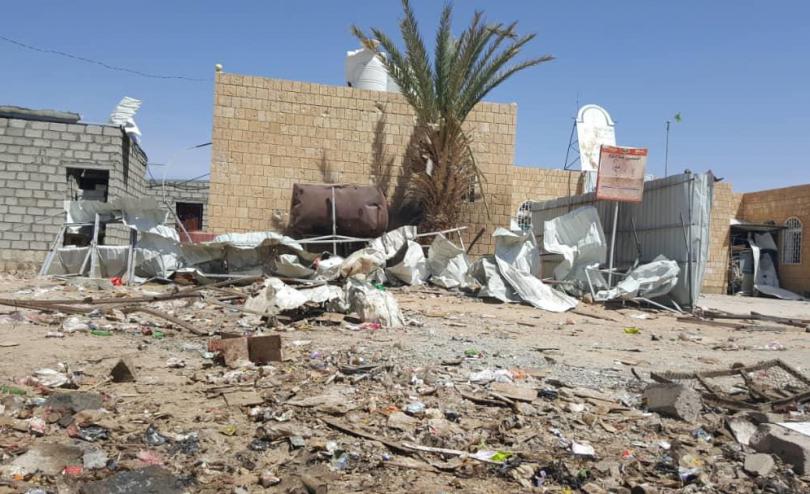YEMEN – At least 193 cholera related deaths reported amongst children

Save the Children: More cholera related cases in first half of 2019 than whole of last year
- Halfway through 2019, there are already more suspected cholera cases than in the whole of 2018
- Some 203,000 children among the total of 439,812[i] suspected cholera cases
- At least 193 cholera related deaths reported amongst children
The battle against cholera in Yemen is far from over, Save the Children warns: the first six months of 2019 have already seen more suspected cases than the whole of 2018, including 203,000 children under 15. At least 193 children died of cholera related illnesses in 2019[ii].
The warning comes at a critical moment. The rainy season is likely to lead to an escalation in the outbreak - there is already flooding, and more heavy downpours threaten to intensify the spread of the waterborne disease.
The total number of cholera related deaths spiked as well. In the first six months of 2019, the number of people dying from suspected cases of cholera was nine times as high as in the same period last year. The fatality rate has doubled[iii].
The conflict in Yemen has disabled much of the infrastructure for clean water and sanitation, leaving some 9.2 million children without proper access to safe water[iv]. Fuel availability is fluctuating, limiting the pumping of sewage and garbage collection, leaving many parts of Yemen a breeding ground for infectious and water borne diseases such as cholera.
Malnourished children are extra vulnerable to cholera related diseases – because of their weak immune systems they are at least three times more likely to die if they contract cholera[v]. Diarrhoeal diseases like cholera are also themselves a major contributor to malnutrition in Yemen.
Tamer Kirolos, Save the Children’s Country Director in Yemen said:
“Disease outbreaks are now rife due to the collapse of the health system and weak sanitation systems and a population made increasingly vulnerable by forced displacement and malnutrition. The health system is under considerable stress, with only half of the health facilities functional while the rest of the facilities remaining closed or are partially functional.
The number of suspected cases has been relatively steady for some weeks, but the disease is endemic and we’re fearing a sharp spike because of the rains and flooding. As long as the conflict rages on, clean water systems are breaking down and funding of aid in Yemen remains too low, all we can do is try and keep as many children alive as possible.”
Save the Children is supporting oral re-hydration corners and primary health care in health facilities in most of Yemen’s hotspot districts. Also, it runs programs to purify water and raise awareness on the prevention of the disease in communities - but only an end to the war can protect children from the widespread cholera, the organisation said.
Save the Children is calling on warring parties in Yemen to resume the implementation of the Stockholm Agreement and to work towards a lasting peace. Urgent action is needed to rebuild the health system to a functional status, or there is a risk of losing even more people to preventable diseases like cholera. Save the Children asks the Yemen authorities to ensure the regular and full payment of civil servant salaries, particularly to health workers and teachers, and equip health facilities with the urgently needed personnel to ensure the continuity of delivery of much needed health services.
ENDS
[i] Cholera Outbreak Monitor (COM), see: http://yemeneoc.org/bi/
[ii] Cholera Outbreak Monitor, see: http://yemeneoc.org/bi/
[iii] According to the COM, the number of suspected cases of cholera in the first six months of 2018 was 93,237 with the number of associated deaths standing at 76. In the first six months of 2019 the total number of cases was 439,812 (about 4.5 times higher than in the same period in 2018, the number of deaths is 695 (nine times higher than in the first half of 2018).
[v] Malnourished children are 6.3x (Severe Acute Malnutrition) and 2.9x (Moderate Acute Malnutrition) more likely to die from diarrhoeal diseases than well-nourished children. See here for more information: http://www.who.int/nutrition/topics/Lancetseries_Undernutrition1.pdf




